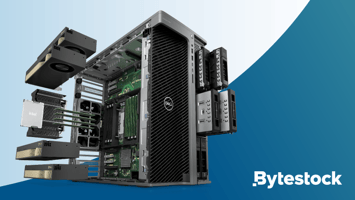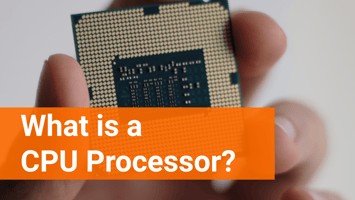We're passionate about providing you with high-quality refurbished workstations that are...
CPU and GPU – What’s The Difference?

CPU
Responsible for processing and executing instructions, the central processing unit (CPU) communicates with other parts of your device and is vital to the computing process.
The CPU has 3 stages – to fetch, decode, and execute an instruction. The instructions come from the user or active software programs, from starting up, shutting down, and everything in between. It performs the arithmetical, logical, and output/input operations of a computer system.
“The CPU is the brains of a device.“
The CPU is comprised of several components:
- The arithmetic logic unit (ALU) performs simple arithmetic and logical calculations.
- The control unit (CU) handles various components of the device, reading and interpreting instructions from RAM. It then transforms the instructions into a series of signals to activate other components.
- The cache carries out the back and forth of data within the CPU. It contains the hierarchy of memory.
Located on the motherboard, the CPU sits in a socket specifically for that processor. It gets very hot and requires its own cooling system, most commonly in the form of a fan.
The ALU is where the calculations happen. Billions of microscopic transistors work as tiny gates that switch on and off and control the flow of electricity. It contains binary information consisting of ones and zeros in the computer world. If the current passes through, it is a one, if the current does not pass through, it is a zero.
Think of the CPU as a silicon brain of a device. The graphics processing unit (GPU) can be called the creative side of the brain, aiding render graphical user interfaces into visually appealing icons and designs.
GPU
Many CPUs come with integrated GPUs to ensure basic graphics can be displayed. This includes being able to render basic objects like a systems desktop environment. However, computers now, demand more intensive graphics-based tasks, such as rendering and designing videos on high-end software. To enable such demanding tasks, a computer needs a dedicated GPU.
The screen of your device is made up of millions of tiny pixels. The CPU creates a binary code which is sent to the GPU. The GPU, following this binary code, decides how to use the pixels to create an image. The information on how to use the pixels to generate an image is sent through a cable to the monitor.
“The GPU is the creative side of the brain“
The GPU breaks down complex problems into thousands or millions of separate tasks and works them out simultaneously. It is a processor specifically designed to handle intensive graphics rendering tasks, located on the motherboard.
CPUs and GPUs have a lot of similarities.
- Both are silicon-based microprocessors
- Both handle data
- And both are critical computing essentials
From the above ins and outs of both components, CPUs and GPUs have different architectures and are built for different purposes.
Check out our full range of components and see how much faster and better your computer system can run.






